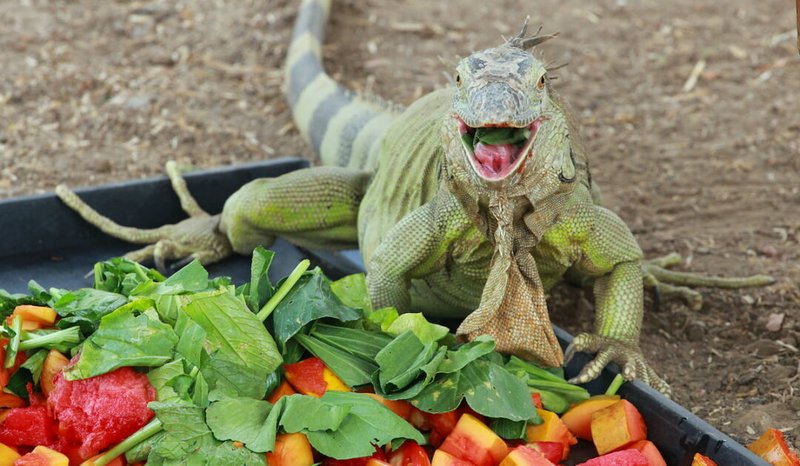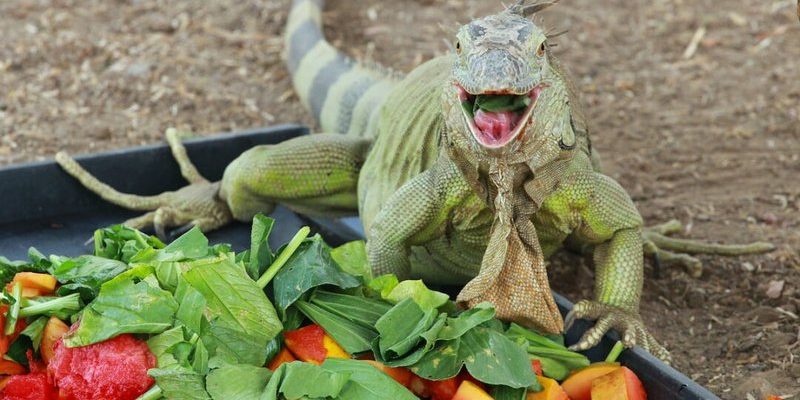
Imagine a plate filled with vibrant greens, colorful fruits, and crunchy veggies—all the things a blue iguana craves! These reptiles are herbivores, meaning they thrive on a diet made primarily of plant matter. But what exactly should you pile onto their plate? In this guide, we’ll explore the ins and outs of a blue iguana’s diet and provide practical tips for feeding them.
Understanding the Blue Iguana’s Natural Diet
Blue iguanas, native to the islands of the Caribbean, particularly Grand Cayman, have adapted to a diet rich in various plants. In the wild, they enjoy a variety of leaves, fruits, and flowers. Their natural food sources provide vital nutrients essential for their growth and vitality. Here’s the thing: replicating this diet at home is key to keeping your blue iguana happy and healthy.
They tend to favor certain leafy greens, which make up a large portion of their diet. Think of options like collard greens, dandelion greens, and mustard greens. These leafy delights are packed with essential vitamins and minerals. You’ll also find that blue iguanas munch on fruits occasionally, indulging in things like mangoes and hibiscus flowers. Feeding them this variety can keep their meals exciting, just as you enjoy a colorful and diverse plate.
Core Components of a Blue Iguana’s Diet
When crafting a meal plan for your blue iguana, the foundation should be built on leafy greens. Here’s a quick breakdown of key components:
- Leafy Greens: These should comprise about 70%-80% of their diet. They love dark, leafy greens rich in calcium.
- Fruits: Treats like berries, bananas, or apples should be offered sparingly, about 10%-15% of their diet.
- Vegetables: Include a mix of safe vegetables like bell peppers and squash, making up the remaining 10%-15%.
Let me explain: blue iguanas have sensitive digestive systems, and the right balance of treats and staples ensures their health. Too much fruit can lead to issues like diarrhea, so moderation is key. Think of it like treating yourself to dessert—enjoyable, but not every day.
Feeding Frequency and Portion Sizes
You might be wondering how often to feed your blue iguana. The frequency depends on their age and size. For example, juvenile blue iguanas need more frequent feedings—about once a day. Adults, on the other hand, can eat every other day.
Portion sizes also matter. A good rule of thumb is to provide food that fills a bowl about the size of their head. This ensures they get enough nutrition without overindulging. If you notice leftovers after a feeding, you might be offering too much. It’s all about finding that sweet spot where they’re well-fed but not stuffed.
Supplements and Special Considerations
In addition to fresh foods, blue iguanas can benefit from dietary supplements, especially when they’re kept in captivity. Calcium and vitamin D3 are crucial for their bone health. Without adequate calcium, they can suffer from metabolic bone disease—a serious issue that can lead to deformities and other health problems.
Consider offering calcium powder sprinkled on their greens a couple of times a week. This small addition can make a big difference in their overall health. Some owners also opt for multivitamins aimed at reptiles, which can provide an extra boost in nutrients.
Foods to Avoid
Not all plants are safe for blue iguanas. Here’s a quick list of foods to steer clear of:
- Avocado: Toxic to reptiles, even in small amounts.
- Rhubarb: Contains oxalic acid, which can be harmful.
- Nightshade Plants: Such as tomatoes and potatoes, can be dangerous.
Always double-check before introducing new foods into their diet. It’s best to err on the side of caution—if you’re unsure, research first or consult a vet experienced with reptiles.
Observing Your Iguana’s Eating Habits
Watching your blue iguana during meal times can provide valuable insights into their health. Are they eagerly munching away, or are they turning their nose up at greens? A healthy blue iguana will have a good appetite and be active. If you notice any drastic changes in their eating habits, it could signal an underlying health issue.
Don’t hesitate to consult a veterinarian if you’re concerned. Sometimes, small shifts in their diet or activity level can be all it takes to keep them thriving.
Creating a Balanced Meal Plan
Now that you have a solid understanding of what a blue iguana should eat, let’s put together a sample meal plan. Feel free to tweak it based on what’s available and what your iguana prefers.
- Day 1: Collard greens, sliced strawberries, and diced bell pepper.
- Day 2: Mustard greens, a few blueberries, and shredded zucchini.
- Day 3: Dandelion greens, mango slices, and chopped carrots.
Having a routine not only helps you measure their intake but also allows your blue iguana to look forward to meal times.
Feeding a blue iguana is all about understanding their needs and providing a well-rounded diet. By focusing on leafy greens, fruits, and safe vegetables, you can ensure your pet remains vibrant and healthy. Always remember to keep an eye on their eating habits and consult a vet if you have any concerns.
Taking the time to care for your blue iguana’s dietary needs is a rewarding experience. With the right foods and attention, you’ll not only see a happy iguana but also enjoy the beauty of these remarkable creatures in your life. Happy feeding!

